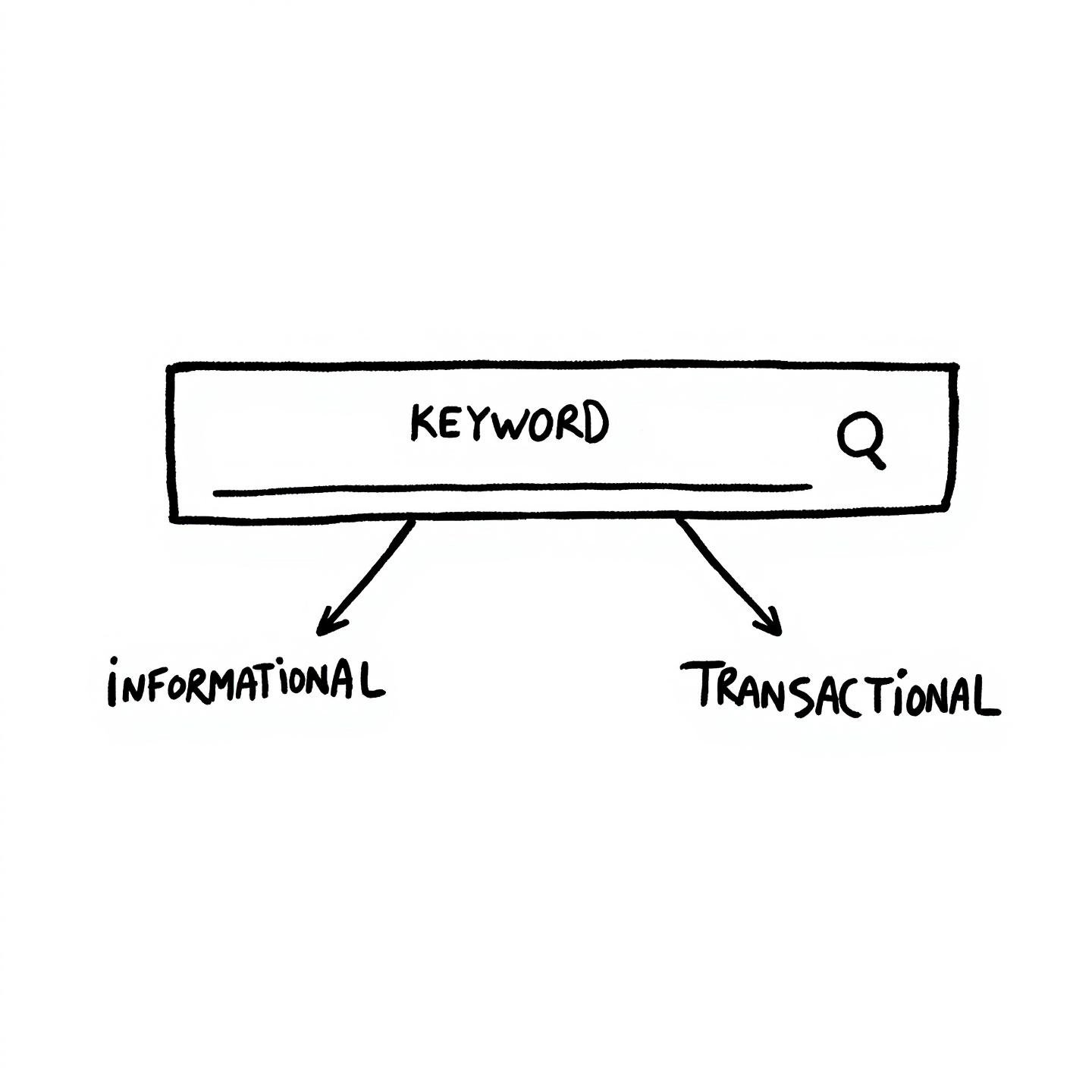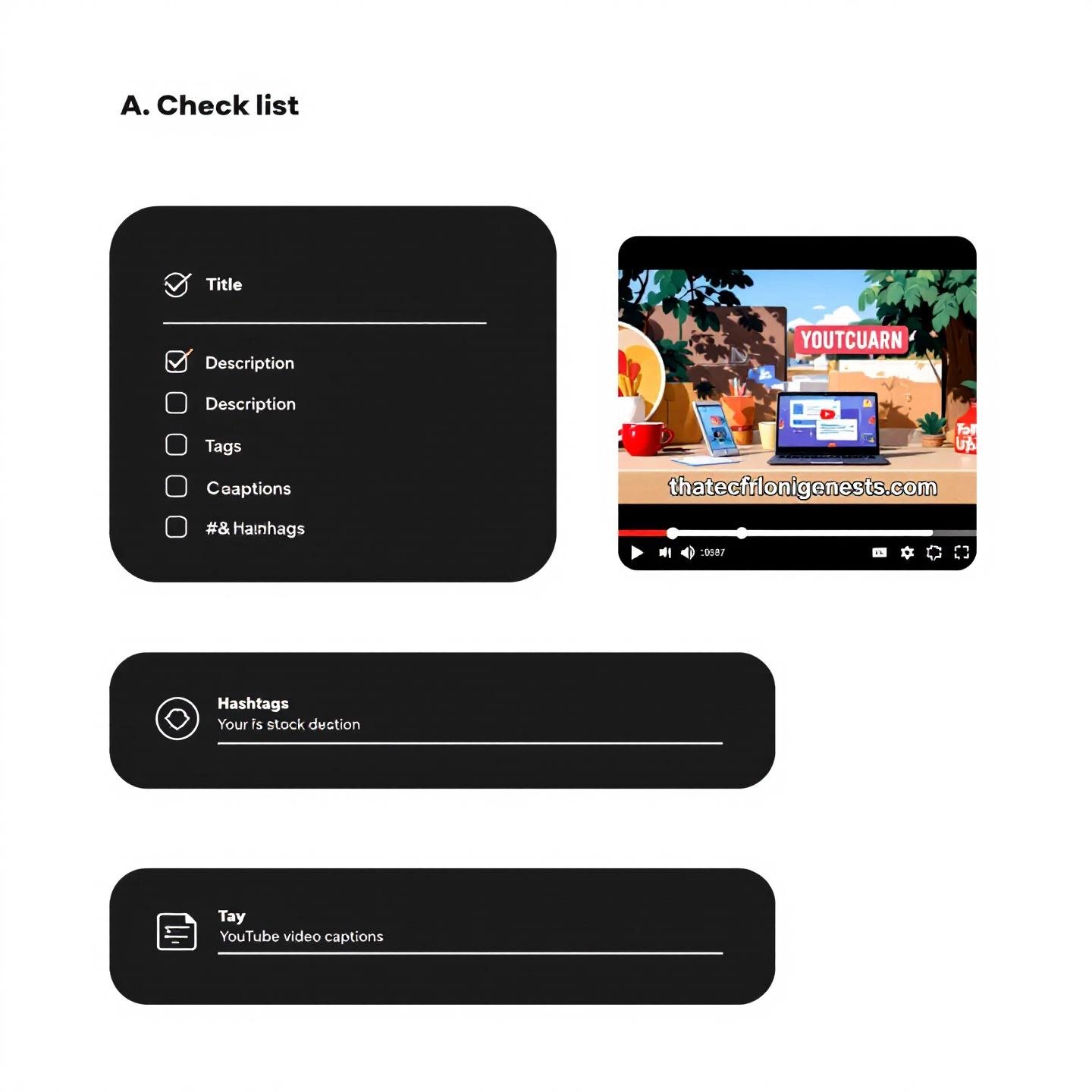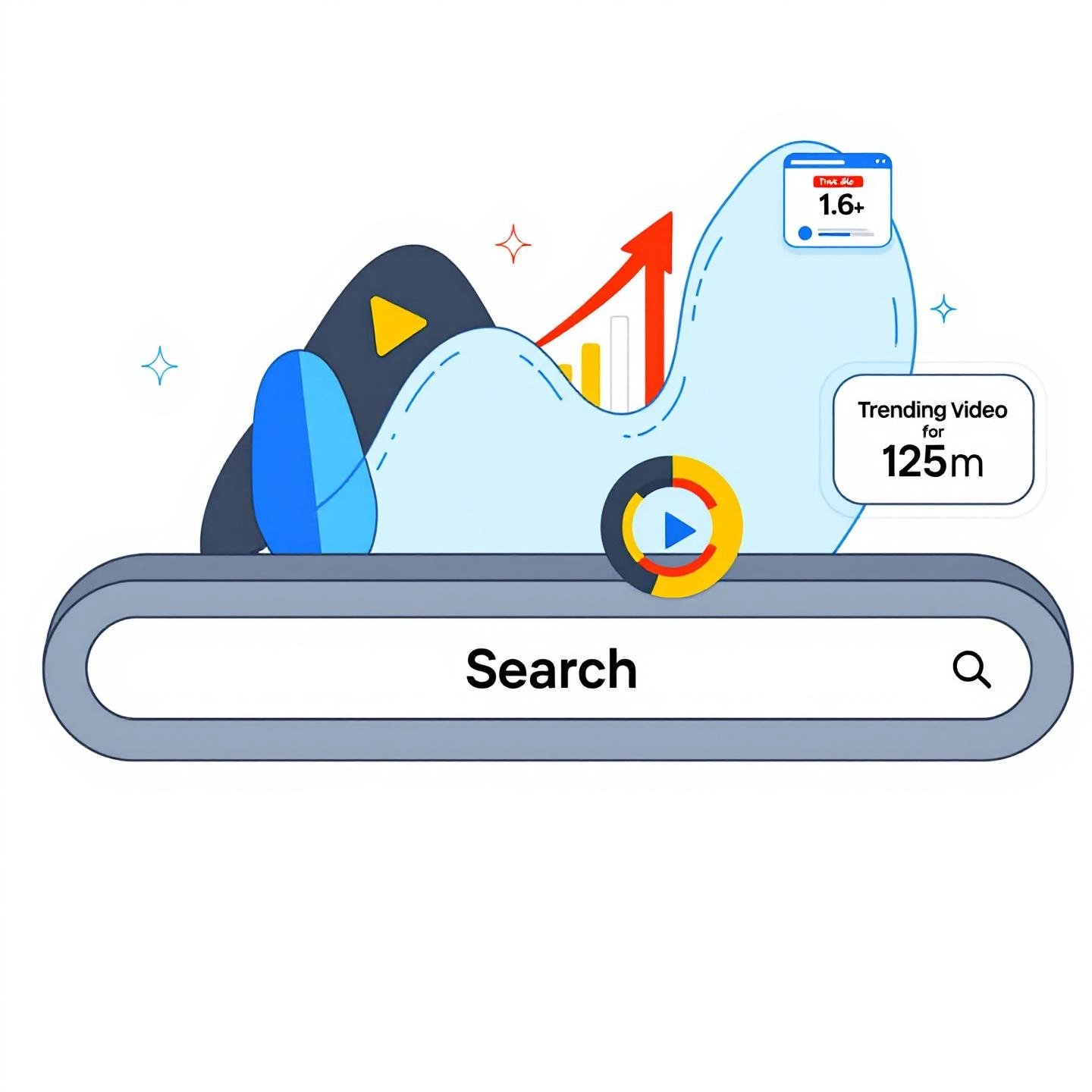Unlocking YouTube Keyword Research
When you search for videos online, have you ever wondered how certain content always appears at the top? Or why some channels seem to attract viewers effortlessly, while others struggle to gain traction? The answer often lies in a behind-the-scenes practice called youtube keyword research. For beginners and seasoned creators alike, understanding this process can be the key that unlocks your channel’s full potential.
Why Keyword Research Matters on YouTube
Imagine launching a brilliant video, only for it to get lost in a sea of uploads. Every single minute, over 500 hours of new video content is added to YouTube, making it a true digital ocean of information. If your content is not optimized for the right keywords, it risks being invisible to your target audience. That’s why keyword research is not just a technical step—it’s the foundation of any successful video content strategy.
YouTube isn’t just a social platform. With more than 2.70 billion monthly active users as of June 2025, it stands as the world’s second-largest search engine, right after Google. Every day, people perform over 3.5 billion searches on the platform, looking for everything from tutorials and reviews to entertainment and education. For businesses, this means an enormous opportunity to reach potential customers, drive brand awareness, and ultimately boost ROI through video marketing.
What Is YouTube Keyword Research?
So, what exactly is youtube keyword research for beginners? In simple terms, it’s the process of discovering the words and phrases your audience uses when searching for content on YouTube. By identifying these keywords, you can tailor your videos—titles, descriptions, and even spoken content—to match what viewers are actively looking for. This increases the chances of your videos appearing in search results and being recommended by the platform’s algorithm.
- For creators: It means understanding your audience’s needs and producing videos that answer their questions.
- For businesses: It’s a way to ensure your marketing efforts are data-driven, targeted, and measurable.
This Guide: Your Roadmap to Mastery
Whether you’re handling YouTube keyword research in-house or considering outsourcing, this guide will walk you through every essential step. You’ll learn how to find high-impact keywords, use both free and premium tools, and apply research insights to grow your channel. By the end, you’ll understand not just the “how” but the “why” behind every tactic—empowering you to make smarter content decisions that drive real results.
Ready to dive in? Let’s explore how keyword research can transform your YouTube strategy and set your channel up for lasting growth.
Why Keyword Research Is Essential for Channel Growth
When you think about scaling your YouTube presence, does it ever feel like you’re throwing videos into a void, hoping something sticks? If so, you’re not alone. Many businesses and creators face this challenge, but there’s a proven way to shift from guesswork to growth: strategic keyword research. Let’s break down exactly why investing in this process delivers real, measurable results for your channel and your business.
The Business Value of YouTube Keyword Research
Imagine being able to predict what your ideal audience is searching for before you even hit record. That’s the power of youtube keyword research for business. By uncovering the actual terms and questions your viewers use, you can craft videos that meet their needs and stand out in a crowded space. But the benefits go far beyond just visibility. Here’s how effective keyword research can transform your channel:
| Benefit | Description |
| Attract a Targeted Audience | Zero in on the viewers most likely to engage with your content, products, or services—resulting in higher-quality leads and better community growth. |
| Increase Discoverability | Optimize your videos for the exact phrases people are searching for, making it easier for new viewers to find your channel in both YouTube and Google search results. |
| Understand Audience Intent | Gain insights into what your audience truly wants—whether they’re seeking how-tos, reviews, or in-depth explanations—so you can deliver content that resonates. |
| Identify Content Gaps | Spot topics or questions that competitors haven’t covered well, allowing you to fill those gaps and become a go-to resource in your niche. |
| Inform a Data-Driven Content Calendar | Build a publishing schedule around proven search demand, ensuring every video you create has a clear purpose and growth potential. |
Making the Case for Decision-Makers
Still wondering if these youtube keyword research benefits are worth the effort? Consider this: YouTube is now the second-largest search engine globally, and its algorithm favors videos that directly address popular search terms. That means keyword optimization isn’t just a technical detail—it’s a direct driver of ROI, brand awareness, and sustained channel growth (source).
For marketing leaders and business owners, this approach offers a clear competitive advantage. By investing in keyword research, you’re not only improving your chances of being discovered—you’re also aligning your content strategy with real user demand, making every video a strategic asset.
Ready to move from theory to action? Next, we’ll break down the core principles behind YouTube keywords, helping you understand the terms and concepts that drive successful research.

Understanding the Core Principles of YouTube Keywords
Ever wondered why some videos soar to the top of YouTube search results while others fade into the background? The answer often comes down to understanding the core principles of YouTube keyword research. If you’re new to this, don’t worry—let’s break down the basics and show how these concepts can power your content strategy.
What Is YouTube Keyword Research?
At its heart, youtube keyword research is the process of discovering the exact words and phrases your audience uses when searching for videos on YouTube. Think about the last time you searched for a “quick pasta recipe” or “best productivity apps”—those phrases are keywords. By identifying and targeting these terms, you help YouTube’s algorithm understand your video’s topic, making it more likely to appear in relevant search results and recommendations.
But research isn’t just about collecting random words. It’s about finding the terms that balance popularity with achievability—so your content stands a real chance of being discovered.
Key Concepts: Search Intent, Search Volume, and Keyword Difficulty
- Search Intent: Why is someone searching for this keyword? Are they looking to learn, compare, buy, or find something specific? For example, “how to edit YouTube videos” signals a need for a tutorial, while “best camera for YouTube vlogging” suggests someone is considering a purchase.
- Search Volume: This metric shows how many times a keyword is searched for on YouTube in a given period. High search volume means lots of potential viewers, but it also often means more competition.
- Keyword Difficulty: This tells you how hard it will be to rank for a particular keyword. Highly competitive keywords may be dominated by established channels, while lower-difficulty terms (often long-tail keywords) offer a better chance for new creators to break through.
Successful keyword research means finding the sweet spot: keywords with enough search volume to drive traffic, but low enough competition that your videos can stand out.
Types of YouTube Keywords and Their Strategic Use
Not all keywords are created equal. Understanding youtube keyword types helps you match your content to what viewers are actually searching for. Here’s a quick guide:
| Keyword Type | Description | Example | Strategic Use |
| Informational | Viewers want to learn or understand something | "how to start a YouTube channel" | Create tutorials, explainer videos, or guides |
| Navigational | Viewers are seeking a specific channel or video | "PewDiePie latest video" | Optimize channel and video names for brand visibility |
| Commercial | Viewers are considering a purchase or comparing options | "best microphones for YouTube" | Make review and comparison videos |
| Transactional | Viewers are ready to take action, like buying or signing up | "buy YouTube intro templates" | Promote products, services, or affiliate offers |
Imagine you’re planning your next video. If your target keyword is informational, focus on providing clear, actionable advice. If it’s commercial, a side-by-side product review may be the winning format. Aligning your content with the right keyword type ensures you meet your audience’s needs—and signals to YouTube that your video is the best match for those searches.
Putting It All Together
Sounds complex? It doesn’t have to be. By grasping the basics—what is youtube keyword research, how to weigh search volume and difficulty, and how to leverage different keyword types—you’re already ahead of many creators. The next step is learning how to find these keywords in practice, which we’ll cover in the upcoming section on manual keyword discovery.
A Step-by-Step Guide to Manual YouTube Keyword Research
Ever wondered how to do YouTube keyword research without fancy software or a big budget? If you’re just starting out—or want to understand the process behind the scenes—this hands-on workflow will show you exactly how manual YouTube keyword research works. It’s a bit like detective work: you’ll use free resources, sharp observation, and a bit of creative thinking to uncover the search terms that can put your videos in front of the right audience.
Manual YouTube Keyword Research: The Five Essential Steps
Let’s break down the process into clear, actionable steps. Whether you’re a solo creator or guiding a team, these methods will help you discover valuable keywords without spending a dime on premium tools.
- Brainstorm Seed KeywordsStart by listing broad topics related to your channel or business. Think about what your target audience is interested in—your products, services, expertise, or trending topics in your niche. For example, if you run a fitness channel, seed keywords could include “home workout,” “weight loss,” or “meal prep.” This brainstorming stage is crucial for manual YouTube keyword research because it sets the foundation for your discovery process.
- Use YouTube Autocomplete for Real-Time IdeasHead to the YouTube search bar and start typing your seed keywords. You’ll notice YouTube instantly suggests related search phrases—these are based on what real users are searching for right now. For instance, typing “home workout” might reveal suggestions like “home workout no equipment” or “home workout for beginners.” These autocomplete results are goldmines for finding popular, long-tail keywords that you might not have considered.
- Analyze Competitor Videos for Keyword InspirationTake a closer look at top-performing videos in your niche. What keywords appear in their titles, descriptions, and tags? Pay attention to recurring phrases and the way successful creators structure their content. If a competitor’s video ranks well for “meal prep for weight loss,” that’s a strong signal the phrase has real search demand. Don’t just copy—look for gaps or variations that haven’t been fully explored (source).
- Check Comments for Audience Language and QuestionsScroll through the comments on your own videos and those of your competitors. You’ll often spot the exact words viewers use, as well as questions or problems they want solved. For example, someone might ask, “Can you show a meal prep plan for vegetarians?”—revealing a keyword opportunity you can address in future content. This step helps you tap into genuine audience intent and uncover long-tail keyword ideas.
- Explore Google Trends for YouTube Search InsightsVisit Google Trends and switch the search type to “YouTube Search.” Enter your potential keywords to see how their popularity has changed over time. This tool can help you spot rising topics, seasonal trends, and compare the relative interest in different search phrases. If you notice “HIIT home workout” is gaining traction, it might be time to create content around that term.
Putting It All Together: Building Your Keyword List
As you work through these steps, compile your findings in a simple spreadsheet. Track each keyword’s search intent, note which competitor videos are ranking, and record any trends or audience questions you discover. This manual approach to YouTube keyword research gives you a clear, data-driven foundation for planning your next videos.
Manual research is thorough, but it can be time-consuming—especially as your channel or business grows. That’s why many teams eventually turn to expert solutions or advanced tools to scale their keyword discovery and stay ahead of the competition.
Curious about how to speed up the process and unlock even more insights? In the next section, we’ll explore the best free tools that can instantly expand your keyword research capabilities—no credit card required.

Finding the Right Free Tools for Your Research Needs
When you start exploring YouTube keyword research, you might wonder: “Do I really need to pay for expensive software to find great keywords?” The good news—especially for beginners or budget-conscious creators—is that there’s a wealth of free YouTube keyword research tool options available. These tools can help you uncover what your audience is searching for, generate fresh video ideas, and make smarter decisions about your content—all without opening your wallet.
Why Use Free YouTube Keyword Generators?
Imagine you’re brainstorming your next video topic, but you’re not sure which terms viewers are actually typing into YouTube. That’s where a free YouTube keyword research tool comes in. These tools let you tap into real search data, spot trending phrases, and gauge the competition—all essential steps for anyone looking to grow their channel organically. Plus, they’re perfect if you want to experiment with different strategies before committing to a paid platform.
Top Free Tools and Extensions for YouTube Keyword Research
Ready to get started? Here’s a quick-reference list of the most valuable free tools and browser extensions to power up your YouTube keyword generator workflow. Each has unique strengths, so you can mix and match based on your goals:
- RyRob’s YouTube Keyword Research Tool: This dedicated tool is designed specifically for YouTube. Enter a seed keyword to get a list of related search terms, YouTube-specific monthly search volumes, and difficulty ratings. Unlike many alternatives, there’s no daily usage limit or sign-up required, making it ideal for both beginners and experienced creators who want unlimited keyword ideas tailored for video content.
- TubeBuddy (Free Extension): As a browser extension, TubeBuddy integrates directly with your YouTube dashboard. The free version provides keyword suggestions, basic optimization tips, and a title generator. While some advanced features require a paid upgrade, the free tier is a great way to start optimizing your videos with real-time insights.
- VidIQ (Free Extension): VidIQ’s free plan offers keyword score analysis, trending video discovery, and basic search term suggestions within YouTube. It’s especially helpful for monitoring what’s working in your niche, though deeper keyword analytics are reserved for paid users.
- Google Keyword Planner: Originally built for Google Ads, this tool can still surface valuable keyword ideas for YouTube. While the data is tailored to Google search (not YouTube), it helps you gauge general search demand and find related terms. Use it to supplement your research and cross-check keyword popularity.
- AnswerThePublic: This tool visualizes the questions and phrases people search for around your seed keyword, including YouTube queries. It’s especially useful for uncovering long-tail questions and content gaps you might not spot with traditional keyword lists (source).
- Google Trends (YouTube Search): Switch to "YouTube Search" mode to see how interest in specific topics rises and falls over time. This is a smart way to catch emerging trends and seasonal spikes before your competitors do.
Tips for Getting the Most Out of Free Tools
- Combine multiple tools: Each tool offers different data points—using two or three together gives you a fuller picture of keyword opportunities.
- Focus on YouTube-specific data: Whenever possible, prioritize tools that provide search volume and difficulty based on YouTube, not just Google. Viewer behavior can differ significantly between platforms.
- Target long-tail keywords: Free tools often excel at surfacing niche, less competitive phrases. These can be goldmines for new or smaller channels looking to rank faster.
While free YouTube keyword generators are powerful starting points, they do have limitations—like restricted access to advanced metrics or daily search caps on some platforms. As your channel grows, you may find yourself craving deeper insights and more streamlined workflows. That’s where premium tools come in, offering robust analytics and automation to truly scale your research. Next, let’s compare the top paid solutions and see how they stack up for serious creators and businesses.
Evaluating the Best Premium Keyword Research Tools for YouTube Growth
You’ve explored the free options and discovered how they can jumpstart your YouTube keyword research—but what if you want to level up? As your channel or business grows, you may find yourself needing deeper insights, faster workflows, and more strategic recommendations. That’s where premium tools step in. Wondering which is the best keyword research tool for YouTube? Let’s break down the top contenders so you can choose the right fit for your goals and budget.
Why Upgrade to Premium Keyword Tools?
Imagine having access to advanced analytics, competitor tracking, trending keyword alerts, and automation—all in one place. Premium tools don’t just save you time; they unlock data you simply can’t get with free versions, helping you spot high-impact opportunities and refine your content strategy at scale. For businesses and full-time creators, this can mean the difference between steady growth and exponential channel success.
Top Paid Solutions Compared: Features, Use Cases, and Pricing
To help you find the perfect match, here’s a side-by-side look at the leading premium YouTube keyword research tools, including BlogSpark, Ahrefs, VidIQ Pro, TubeBuddy Legend, and SEMrush.
| Tool | Key Features | Best For |
|---|---|---|
| BlogSpark |
| Agencies, businesses, and creators seeking end-to-end content and keyword strategy with minimal manual effort |
| Ahrefs (YouTube Keyword Tool) |
| SEO professionals, marketers, and businesses needing robust analytics and competitive intelligence |
| VidIQ Pro |
| Full-time creators and brands aiming to maximize reach and monitor competitors |
| TubeBuddy Legend |
| Creators managing multiple channels or scaling content output |
| SEMrush (YouTube Tools) |
| Businesses and marketers wanting a unified platform for YouTube, web, and paid search insights |
Choosing the Best Keyword Research Tool for YouTube
- BlogSpark is ideal if you want an all-in-one AI-powered solution that handles both keyword strategy and content creation—especially valuable for agencies and brands scaling up their publishing.
- Ahrefs excels in deep-dive analytics and is often the go-to for ahrefs youtube keyword research where competitive intelligence is a priority.
- VidIQ Pro and TubeBuddy Legend are favorites among creators for their seamless YouTube integration, actionable optimizations, and intuitive dashboards.
- SEMrush stands out for businesses seeking a holistic view of their digital presence, combining YouTube insights with broader SEO and advertising tools.
Ultimately, the right premium tool comes down to your workflow, content goals, and budget. If you’re ready to move beyond manual research and free tools, investing in a robust platform can transform your YouTube strategy—helping you uncover profitable keywords, outmaneuver competitors, and drive measurable growth. Next, let’s explore how to put your research into practice by seamlessly weaving keywords into your video SEO workflow.

How to Weave Keywords into Your YouTube Video SEO Strategy
Ever finished your keyword research and wondered, “Now what?” You’re not alone. Knowing which search terms matter is only half the battle—the real magic happens when you skillfully integrate those keywords into every element of your YouTube video. This is where a strong youtube video seo strategy turns research into real-world results.
Where Should You Place Your Keywords for Maximum Impact?
Imagine you’ve found the perfect keywords, but your videos still aren’t ranking. The secret? Strategic placement. YouTube’s algorithm scans multiple parts of your video and channel to decide which searches your content should appear in. Here’s a practical checklist to help you put your keyword research for YouTube SEO into action:
| Placement | Best Practices | Why It Matters |
|---|---|---|
| Video Title |
| Signals video topic to both viewers and YouTube; higher keyword prominence increases click-through and ranking potential |
| Description |
| Helps YouTube understand the content and relevance of your video; supports ranking for multiple related queries |
| Tags |
| Tags reinforce your video’s topic and help YouTube connect your content to relevant searches and suggested videos |
| Spoken Content & Captions |
| Spoken keywords are indexed from transcripts and captions, boosting visibility in voice and text-based search results |
| Hashtags |
| Hashtags help categorize your video and can increase discoverability for trending or niche topics |
| Channel Info |
| Reinforces your overall channel theme and boosts the authority of your content for related searches |
Practical Tips for Seamless Keyword Integration
- Keep it natural: Write titles and descriptions for humans first, not just algorithms. If it sounds forced, rephrase until it flows.
- Don’t overstuff: Using too many keywords can hurt your rankings—stick to 1-2 main phrases and a few natural variations.
- Update older videos: Revisit high-potential videos and optimize their metadata with newly discovered keywords for a quick SEO boost.
- Monitor performance: Track which keywords drive the most views and engagement, then refine your strategy for future uploads.
Think of your keyword placements as building blocks—each one adds context and authority, helping YouTube surface your video to the right viewers at the right time. When you consistently apply these tactics, you’ll notice stronger rankings, higher click-through rates, and a more engaged audience.
Ready to turn your keyword insights into compelling content ideas? Next, we’ll show you how to use keyword data to fuel your video brainstorming process and consistently deliver what your audience is searching for.
Using Keyword Research for YouTube Videos to Spark Irresistible Content Ideas
Ever stared at a blank content calendar, wondering what to film next? You’re not alone. Even the most creative channels hit roadblocks—but what if you could let real audience demand guide your next big idea? That’s where keyword research for YouTube videos shifts from a behind-the-scenes optimization chore to a powerful engine for content ideation.
From Search Data to Video Concepts: How to Read Audience Demand
Imagine knowing exactly what your viewers are searching for—before you hit record. Keyword research unlocks this insight. Here’s how to use it as a proactive brainstorming tool:
- Spot high-potential keywords: Start by reviewing the list of phrases you’ve uncovered in your research. Look for those with a healthy balance of search volume and attainable competition. Tools like YouTube Autocomplete, Google Trends (set to YouTube Search), and free keyword generators reveal not just what’s popular, but what’s trending upward.
- Analyze keyword clusters: Group related keywords together—think of them as topic families. For example, if you see “meal prep for beginners,” “easy meal prep recipes,” and “meal prep for weight loss,” you have a clear cluster pointing to a high-demand content area. Clustering lets you plan a series or pillar video that covers a topic from multiple angles.
- Dig into search intent: Ask, “What is the viewer hoping to achieve with this search?” Are they looking for step-by-step instructions, product comparisons, or quick tips? For instance, “how to meal prep for a week” signals a need for a practical, actionable guide, while “best meal prep containers” points to a review or buying guide.
Turning Keywords into Click-Worthy Video Ideas
Once you’ve identified a promising keyword or cluster, the next step is to transform it into a compelling video title and concept. Here’s a practical approach:
- Start with the keyword: Place your main keyword at the beginning of your working title. For example, “Meal Prep for Beginners: 5 Easy Recipes for Busy People.”
- Add a unique angle: Scan your competitors—what are they missing? Maybe others focus on “healthy” meal prep, but no one has tackled “budget-friendly” recipes. Your title could become “Meal Prep for Beginners on a Budget: 5 Easy Recipes.”
- Directly answer user queries: If your keyword is a question (like “how to meal prep for weight loss”), make your video a direct, actionable answer. Titles such as “How to Meal Prep for Weight Loss: Step-by-Step Guide” are clear, relevant, and algorithm-friendly.
| Keyword | Potential Video Title | Content Concept |
|---|---|---|
| "home workout no equipment" | "Home Workout No Equipment: Full-Body Routine for Beginners" | Demonstrate a workout routine using only bodyweight exercises, targeting viewers who lack gym access. |
| "best camera for YouTube vlogging" | "Best Cameras for YouTube Vlogging in 2025: Honest Reviews & Comparisons" | Compare top vlogging cameras, highlighting pros, cons, and which is best for different creator types. |
| "how to grow succulents indoors" | "How to Grow Succulents Indoors: Beginner Tips & Common Mistakes" | Offer a beginner-friendly guide that answers common questions and shows practical care steps. |
Pro Tips: Maximizing Your Content Calendar with Keyword Data
- Batch similar topics: If you spot several related keywords, plan a themed series or playlist. This not only boosts watch time but also signals topical authority to YouTube’s algorithm.
- Update old ideas: Use keyword trends to refresh older videos with new takes—like “2025 Edition” or “Updated Guide.”
- Fill content gaps: Look for questions in comments or keyword tools that competitors haven’t answered. These gaps are golden opportunities for new video ideas from keywords others have missed.
When you let keyword research drive your content ideas, you’re not just chasing trends—you’re building a video library that meets real audience needs. This approach ensures every upload has purpose and potential, setting you up for consistent growth. Next, we’ll explore how to uncover those elusive low-competition keywords that can help new channels gain traction faster.

Uncovering Low-Competition YouTube Keywords for Faster Channel Growth
When you’re just starting out on YouTube, does it ever feel like the odds are stacked against you? Big channels already dominate the top spots, and every popular keyword seems out of reach. Sounds frustrating? The good news: you don’t have to compete head-to-head with giants to see real, measurable results. By targeting low competition YouTube keywords, even small or new channels can carve out a niche and build momentum—often much faster than you’d expect.
Why Low-Competition Keywords Are a Smart Investment
Imagine searching for "fitness" or "music"—the results are flooded with established creators. Now, what if you focused on phrases like "10-minute morning yoga for beginners" or "how to tune a ukulele for kids"? These specific, less-contested search terms are the secret to the investment youtube keyword research low competition strategy: they may have lower search volumes, but your chances of ranking—and being discovered—are much higher.
Actionable Tactics for Finding Low-Competition Keywords
Ready to uncover those hidden gems? Here’s a practical, step-by-step checklist to help you target keywords where big players aren’t paying attention:
- Focus on Long-Tail Question KeywordsStart by brainstorming questions your audience might type into YouTube. These usually begin with "how to," "what is," or "best ways to…" For example, "how to edit videos on iPhone free app" or "what is the best soil for succulents indoors." Long-tail question keywords are naturally less competitive and attract viewers with specific intent.
- Analyze 'People Also Ask' Boxes and Related SearchesWhen you search on Google or YouTube, look for the "People Also Ask" section or related searches at the bottom of the results page. These are real questions and phrases your audience is using—often overlooked by bigger channels. Use these as inspiration for your next video topics.
- Use Tool Filters for High-Volume, Low-Competition TermsFree and premium keyword tools (like TubeBuddy, VidIQ, or Ahrefs) often let you filter by search volume and competition. Set filters to show keywords with moderate-to-high searches but low competition scores. This is where you’ll find "sweet spot" keywords—terms with enough demand but not dominated by established channels.
- Target Hyper-Niche or Localized PhrasesDon’t be afraid to get specific—think "meal prep for college students on a budget" or "best coffee shops in Austin for remote work." Geo-targeted and niche keywords help you stand out and connect with a passionate subgroup of viewers. For local businesses or creators, these can be a goldmine for fast visibility (source).
- Check Competitor GapsBrowse top videos in your niche and look for questions or topics not fully covered. Read through comments—viewers often ask for content that doesn’t exist yet. Filling these gaps with targeted videos can quickly establish your authority, even in a crowded space.
Real-Life Example: Small Channel, Big Results
Imagine you run a gardening channel. Instead of targeting "plant care," you focus on "how to propagate snake plants in water." This long-tail, low-competition keyword attracts a smaller but highly interested audience. As your video ranks, you start building authority, and YouTube’s algorithm is more likely to recommend your content for related searches. Over time, you can expand into broader topics as your channel grows.
Pro Tips for Sustainable Growth
- Batch Content Around Clusters: Once you find a promising low-competition keyword, create a series of related videos. This increases watch time and signals topical authority to YouTube.
- Monitor Trends: Use Google Trends (set to YouTube Search) to spot rising queries before they become saturated. Early movers often enjoy a lasting ranking advantage.
- Iterate and Optimize: Review your analytics to see which low-competition keywords drive the most engagement, then double down on those topics for future videos.
By investing in low-competition YouTube keywords, you give your channel the best chance to grow—no matter your size or starting point. This strategy is especially powerful for new creators and businesses looking to see results quickly, without getting lost in the noise. Next, we’ll wrap up with a summary of key takeaways and show how a strategic approach to keyword research can drive ongoing channel success.
Conclusion
When you look back at the journey we’ve covered, does YouTube keyword research still feel overwhelming? Hopefully, now you see it as a structured, repeatable process—one that can turn guesswork into growth and help your videos reach the audiences that matter most. Whether you’re a solo creator, a marketing manager, or a business leader, mastering this process is the foundation of any effective youtube seo content strategy.
Your Roadmap to YouTube Growth
- Start with clear goals: Define what success looks like for your channel—brand awareness, leads, sales, or community building. Every keyword decision should support these objectives.
- Understand your audience: Research not just what viewers are searching for, but why. Align your keyword choices with their intent, questions, and pain points.
- Combine manual research and the right tools: Use brainstorming, YouTube Autocomplete, competitor analysis, and comments to surface real search terms. Supplement this with free and premium tools for deeper insights and efficiency.
- Optimize every piece of metadata: Weave your keywords naturally into titles, descriptions, tags, and spoken content. Consistency and relevance are key for both the algorithm and your audience.
- Let keyword data drive content ideas: Use research to identify high-potential topics, fill content gaps, and batch related videos for maximum watch time and authority.
- Target low-competition opportunities: Especially for new or smaller channels, focusing on underserved queries and long-tail keywords is the fastest path to visibility.
- Measure, iterate, and adapt: Track performance using YouTube Analytics and Google Trends. Update your strategy as trends shift and your channel grows.
Why a Professional YouTube Keyword Research Service Makes Sense
Sounds like a lot to juggle? For many businesses and busy creators, the time and expertise required to master every step can be daunting. That’s where a specialized youtube keyword research service like BlogSpark comes in. By partnering with experts who live and breathe YouTube SEO, you can:
- Unlock advanced keyword discovery and clustering tailored to your niche
- Receive data-driven content briefs and SEO-optimized outlines
- Automate tedious research and content tasks, freeing your team for creative work
- Scale your publishing with consistent, high-quality videos that rank
- Focus on your core business, knowing your YouTube strategy is in expert hands
Imagine the impact: more targeted viewers, higher engagement, and measurable channel growth—all without the stress of manual research or second-guessing your next move.
If you’re ready to turn YouTube into a true growth engine for your brand, consider taking the next step. Explore how BlogSpark’s tailored YouTube keyword research service can help you execute a winning strategy and achieve results that matter.
Frequently Asked Questions About YouTube Keyword Research
1. What is YouTube keyword research and why does it matter?
YouTube keyword research is the process of identifying the words and phrases people use when searching for videos on YouTube. By targeting these keywords, creators and businesses can improve their video rankings, reach the right audience, and increase engagement. Optimized keywords help your content appear in search results and recommendations, driving measurable channel growth.
2. Which free tools are best for YouTube keyword research?
Top free tools include RyRob’s YouTube Keyword Research Tool, TubeBuddy and VidIQ browser extensions, Google Keyword Planner, AnswerThePublic, and Google Trends (set to YouTube Search). These tools help uncover popular search terms, trending topics, and long-tail keyword ideas without cost, making them ideal for beginners and those on a budget.
3. How can I find low-competition keywords for my YouTube channel?
To find low-competition YouTube keywords, focus on long-tail question phrases, use 'People Also Ask' and related searches, apply tool filters for high-volume but low-competition terms, and target niche or localized keywords. Analyzing competitor gaps and audience comments can also reveal untapped opportunities for faster channel growth.
4. Where should I place keywords for the best YouTube SEO results?
For optimal YouTube SEO, place your main keywords in the video title, early in the description, tags, spoken content (captions), and relevant hashtags. Also, include broad keywords in your channel description. Strategic placement ensures your video is discoverable and relevant to both viewers and YouTube’s algorithm.
5. What are the advantages of using a YouTube keyword research service like BlogSpark?
A service like BlogSpark offers AI-powered keyword discovery, SEO-focused content outlining, and workflow automation. This saves time, ensures data-driven decisions, and allows you to scale your content production. Businesses and creators benefit from professional insights and higher-quality, SEO-optimized videos that drive measurable results.




